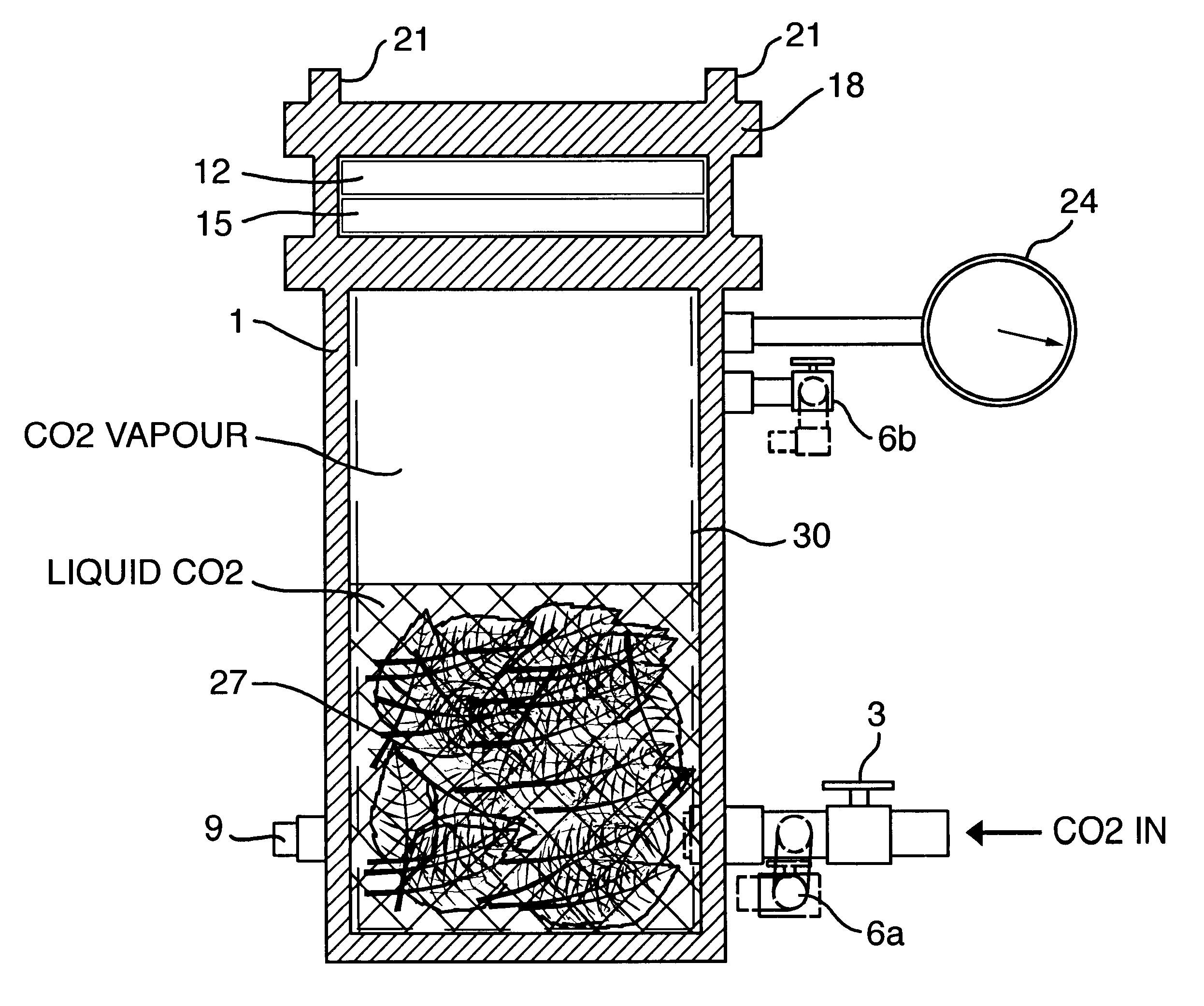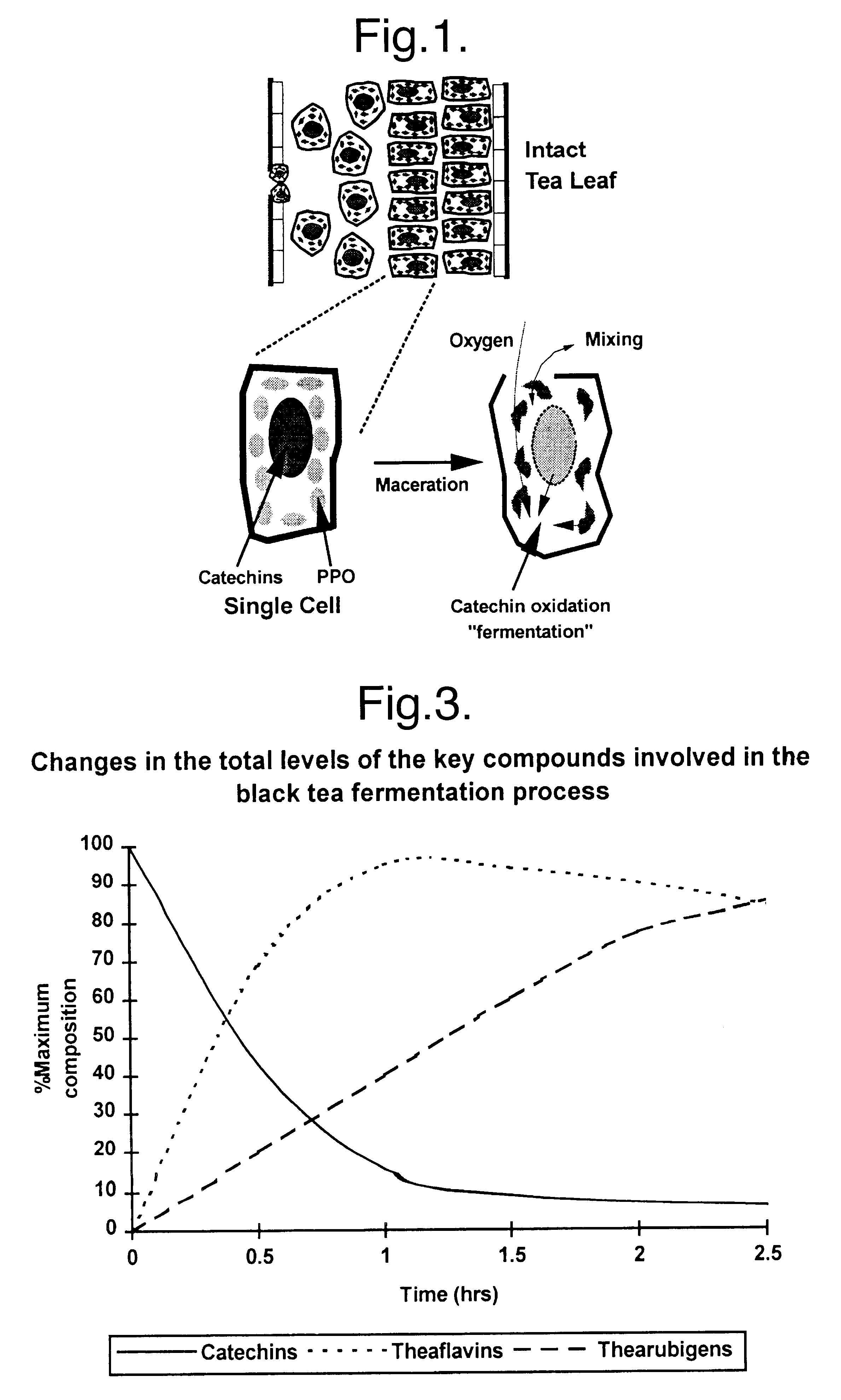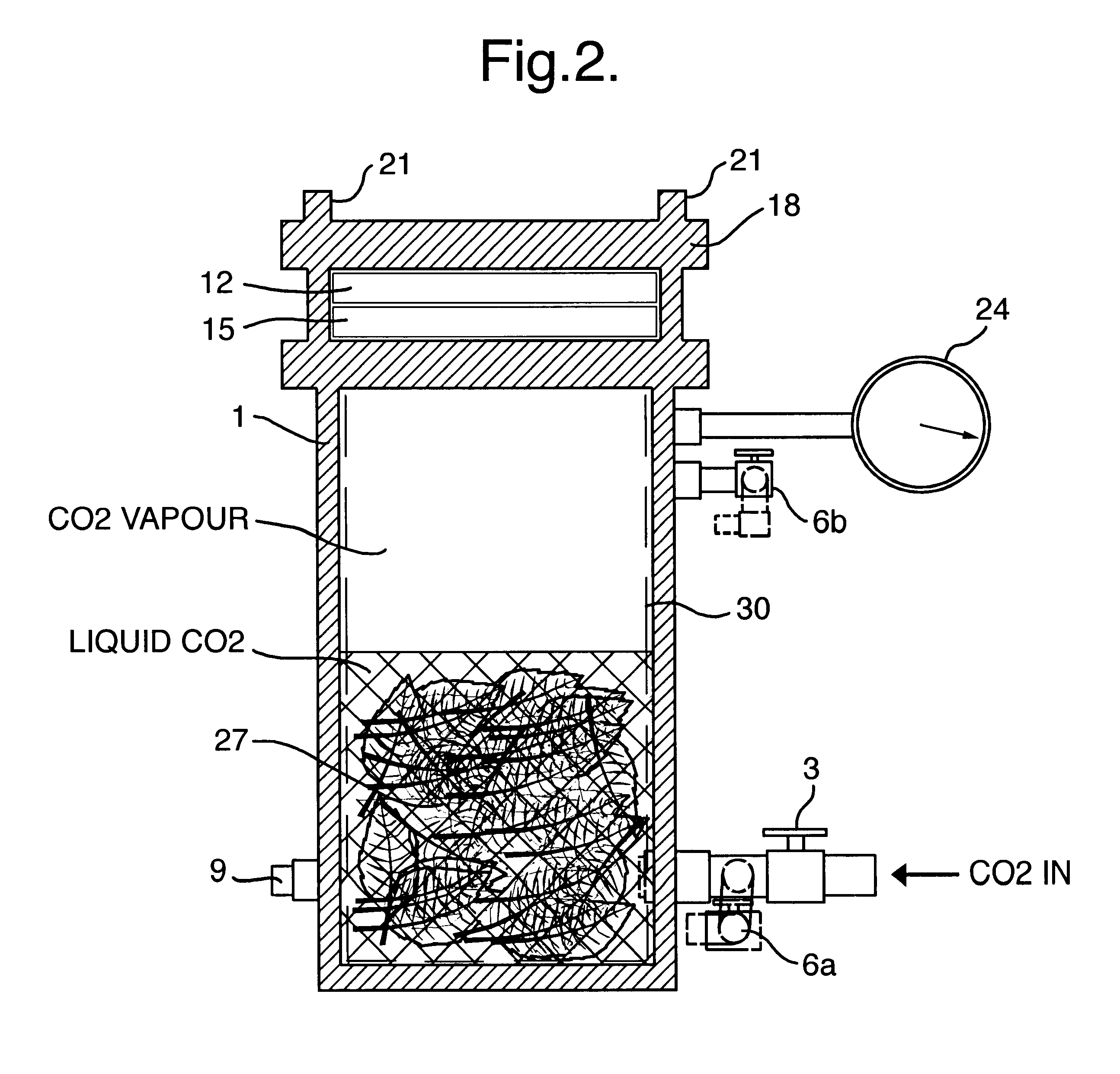Tea manufacture
a technology of tea and leaf tea, which is applied in the field of tea manufacturing, can solve the problems of no commercially available tea manufacturing equipment that can deliver such a leaf tea, and achieve the effects of improving oxygen diffusion, facilitating the onset of fermentation reactions, and increasing the exchange of cell contents
- Summary
- Abstract
- Description
- Claims
- Application Information
AI Technical Summary
Benefits of technology
Problems solved by technology
Method used
Image
Examples
example 2
Comparison of Fermentation Timecourse of CO.sub.2 Treated and Fresh Untreated Leaf
Fermentation time course experiments were conducted to monitor the fermentation of both CO.sub.2 treated and untreated fresh tea leaves. Black tea fermentation can be measured in terms of changes in the total levels of catechins, theaflavins and thearubigins. FIG. 3 shows the typical changes in the levels of these compounds over a 2.5 hour period.
75 g of Sri Lankan tea was CO.sub.2 treated as described in Example 1 except that 4 g samples of leaf were removed and frozen at hourly intervals. The total levels of catechins and theaflavins were measured as described below. Both of these groups of compounds have been shown to be critical to this process. More specifically, catechins are acted upon by tea polyphenol oxidase to form theaflavins via an orthoquinone intermediary. It is thought that it is the action of polyphenol oxidase in these reactions which is critical, as the non-enzymic chemical oxidation...
example 3
Comparison of Fermentation Timecourse of CO.sub.2 Treated and CTC Treated Leaf
75 g of Sri Lankan leaf was treated and fermented as described in Example 2. Further to this 300 g of leaf was passed through a CTC machine three times before being fermented under the same conditions as the CO.sub.2 treated leaf. 4 g samples of both the CO.sub.2 and CTC treated leaf were taken at regular intervals, hourly for the CO.sub.2 leaf and every 20 minutes for the CTC leaf. These samples were then analysed as per Example 2.
Operating Conditions for the Pressure Rig
Operating pressure of 630 psi, equilibrium time of 8 minutes, decompression time of 35 seconds and heat treatment of 39.degree. C. for 5 seconds.
The results for the CO.sub.2 treated samples are given in Tables 6 (catechins) and 7 (theaflavins) and reproduced graphically in FIGS. 6 and 7. The data for the CTC manufactured samples are given in Tables 8 (catechins) and 9 (theaflavins) and reproduced graphically in FIGS. 8 and 9.
(Where EGC is...
example 5
Manufacture of Black Tea Using the Carbon Dioxide Process
Black tea was processed by the traditional and carbon dioxide processing methods previously described. The moisture and total soluble solids contents were measured as described below and the teas were tasted as described in Example 1.
Operating Conditions for the Pressure Rig
Operating pressure of 640 psi, equilibrium time of 10 minutes, decompression time of 32 seconds and heat treatment of 40.degree. C. for 5 seconds.
Moisture Measurement
2-3 g of leaf was weighed accurately into a preweighed foil tray and dried overnight in a 100.degree. C. oven. The dried tea was weighed and the weight loss after drying was determined. The moisture content was then calculated as a percentage of the starting weight.
Total Soluble Solids
2 g of tea was weighed accurately into a 500 ml conical flask and was refluxed with boiling water for 1 hour, stirring occasionally. This liquor was filtered into a 200 ml volumetric, cooled and made up to volume....
PUM
 Login to View More
Login to View More Abstract
Description
Claims
Application Information
 Login to View More
Login to View More - R&D
- Intellectual Property
- Life Sciences
- Materials
- Tech Scout
- Unparalleled Data Quality
- Higher Quality Content
- 60% Fewer Hallucinations
Browse by: Latest US Patents, China's latest patents, Technical Efficacy Thesaurus, Application Domain, Technology Topic, Popular Technical Reports.
© 2025 PatSnap. All rights reserved.Legal|Privacy policy|Modern Slavery Act Transparency Statement|Sitemap|About US| Contact US: help@patsnap.com



